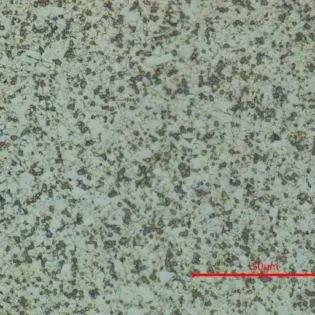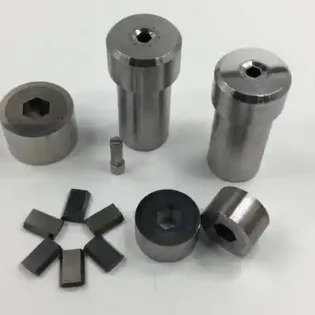Stainless steel is a kind of high alloy steel which can resist corrosion. It has beautiful surface, and it does not need to be plated or painted. Therefore, many mechanical factories usually do not make any paint treatment to show that they are stainless steel, and carbon steel must be treated with rust prevention.
Simple classification of stainless steel
Stainless steel can be roughly divided into three categories: 200 series, 300 series and 400 series. Among them, 300 series is the most commonly used, and 200 series and 400 series are the substitutes of 300 series. There is no nickel in the 400 series, so it can be attracted by a magnet. The 200 series and 300 series have nickel, so they are not magnetic, and can not absorb iron.
304 is the most common variety in 300 series, so the price trend of the whole stainless steel can be judged from the price change of 304. The 200 series contains less nickel, the 400 series does not contain nickel, and the 300 series contains the most nickel, so the 300 series is most affected by the nickel price.
300 series can be simply divided into 304, 304L, 316, 316L, 321, 309S, 310S and so on. The distinction is based on the different contents of various metal elements and the characteristics of stainless steel with different contents. The difference between 304 and 304L lies in the difference of carbon (c) content. The one with L indicates low carbon content, also known as low carbon, and the difference between 316 and 316L is the same.

Morphological classification of stainless steel
Stainless steel can be divided into five categories: rolled plate, plate, profile, steel pipe and parts, and the most important is coil and plate. Profile is made of plates of various shapes of materials, such as angle steel, flat steel, I-beam, channel steel and so on. Steel pipe mainly refers to seamless steel pipe, and the corresponding seamless steel pipe is welded pipe, the difference lies in whether one-time forming. Parts mainly refer to elbows and flanges and other small things
Coiled materials and plates are actually the same, but the factory form is not the same. Coiled materials are rolled one by one, and the plates are sheet by sheet. If the factory leaves the factory, it is also called original plate. Generally, it can’t be rolled if it is more than 16 mm.
The price of coil and plate is also different. If the coil is purchased, it is calculated according to the actual weighing. So the price of coil is high. The board is calculated according to the theory, and the price will be lower because of the difference. For example, if the thickness of 10 mm is 9.6 mm, there will be a price difference between them.
Stainless steel plate is divided into hot rolling and cold rolling according to different rolling process. Hot rolling is usually marked as No.1, while cold rolling is marked as 2B or BA (the surface of Ba is better and brighter than 2B, which is close to the mirror. The best mirror is the mirror. If the mirror is not in stock, it needs to be processed). For example, 304 is often purchased plate, which means that the coil must be opened and flattened by machine. This kind of machine is called flattening machine. It can be opened into different lengths by the flattening machine.
Domestic cold rolling is generally less than 3 mm, and hot rolling is generally more than 3 mm. The thickness of 3 mm is both hot rolling and cold rolling, but the thickness of imported cold rolled sheet can be less than 4 mm or even less than 6 mm. Hot rolled 3 mm to 12 mm plate called medium plate, more than 12 mm called thick plate, can be thicker than 120 mm, and said hot rolling plate, and cold rolling is cold rolling sheet.
Simple calculation method of theoretical weight of stainless steel plate
Plate weight = specific gravity × thickness (mm) × width (m) × length (m)
According to this formula, the weight is kilogram (kg), which should be accurate to two decimal places. Because the price of stainless steel is expensive and the transaction volume is large, the number after the decimal point is also very important, so the money should be accurate to two decimal places.
The specific gravity of stainless steel (kg) different stainless steel has different specific gravity:
The specific gravity of the 400 series is 7.75
304. 321. 304n. 201. 202. 304L.. 301
The specific gravity of 310s.309s.316.316l was 7.98.

Steel grade comparison table
Countries in the world have different names for stainless steel. The market often contacts with China and the United States, called GB and American Standard. The above 200 series, 300 series and 400 series are American standards. Because American standards are easy to understand, they are usually called American standards.
China national standard = = = = = American Standard
1cr17mn6ni5n========201
1cr18mn8ni5n========202
0cr18ni9============304
00cr19ni10==========304L
0cr18ni12mo2t=======316Ti
00cr17ni14mo2=======316L
0cr17ni12mo2========316
1cr18ni9ti==========321
0cr18ni10ti=========321
0cr23ni13===========309S
1cr20ni14===========309S
0cr25ni20===========310S
1cr25ni20===========310s
0cr13===============405
1cr13===============410
2cr13===============420
3cr13===============420
4cr3================430
The element content in national standard address generally refers to the middle value of content, which is the theoretical value, which can be larger or less.
About the tolerance of stainless steel
Tolerance is generally recognized as the allowable length or thickness deviation. In the production process of plates, for various reasons, the actual thickness of plates is often less than the theoretical thickness, such as 6 mm plate, only 5.6 mm. In China, tolerance is often equal to negative tolerance, and positive tolerance is rarely seen. In plate trading, it is usually calculated according to the theoretical thickness, which is why the theoretical price is lower than the weighing price. There are different tolerances and different prices. Generally speaking, plates with large tolerances are cheaper. For example, if the tolerance of 6 mm plate is less than 5.5 mm, it is a large tolerance.
1. The tolerance range of 304 / 2b is shown in the table below (for reference only)
| Kích th??c | Large tolerance | Normal tolerance | Small tolerance | Without tolerance |
| 0.4MM | 0.3-0.32 | 0.33-0.37 | 0.37-0.39 | >0.39 |
| 0.5MM | 0.4-0.42 | 0.43-0.47 | 0.47-0.49 | >0.49 |
| 0.6MM | 0.5-0.52 | 0.53-0.57 | 0.57-0.59 | >0.59 |
| 0.7MM | 0.6-0.62 | 0.63-0.67 | 0.67-0.69 | >0.69 |
| 0.8MM | 0.7-0.72 | 0.73-0.77 | 0.77-0.79 | >0.79 |
| 0.9MM | 0.8-0.82 | 0.83-0.87 | 0.87-0.89 | >0.89 |
| 1.0MM | 0.89-0.91 | 0.91-0.94 | 0.94-0.99 | >0.99 |
| 1.2MM | 1.01-1.08 | 1.09-1.15 | 1.16-1.18 | >1.18 |
| 1.5MM | 1.32-1.38 | 1.39-1.45 | 1.46-1.48 | >1.48 |
| 2.0MM | 1.71-1.79 | 1.8-1.86 | 1.87-1.9 | >1.9 |
| 2.5MM | 2.23-2.38 | 2.39-2.42 | 2.42-2.47 | >2.47 |
| 3.0MM | 2.7-2.77 | 2.78-2.85 | 2.85-2.9 | >2.9 |
2. The tolerance range of hot rolled plate is shown in the table below (for reference only)
| Kích th??c | Big tolerance | Normal tolerance | Small tolerance | Without tolerance |
| 3.0MM | 2.6-2.75 | 2.75-2.85 | 2.86-2.9 | >2.9 |
| 4.0MM | 3.2-3.6 | 3.6-3.75 | 3.75-3.95 | >3.95 |
| 5.0MM | 4.2-4.6 | 4.6-4.75 | 4.75-4.95 | >4.95 |
| 6.0MM | 5.1-5.5 | 5.5-5.75 | 5.75-5.9 | >5.9 |
| 8.0MM | 7.2-7.5 | 7.5-7.75 | 7.75-7.95 | >7.9 |
| 10.0MM | 9.1-9.3 | 9.3-9.6 | 9.6-9.85 | >9.85 |
| 12.0MM | 11.1-11.2 | 11.2-11.6 | 11.6-11.85 | >11.85 |
| 14.0MM | 13.1-13.2 | 13.2-13.6 | 13.6-13.85 | >13.85 |
Characteristics and uses of main stainless steels
304: as a kind of widely used steel, it has good corrosion resistance, heat resistance, low temperature strength and mechanical property, good hot working properties such as stamping and bending, no heat treatment hardening phenomenon, no magnetism, and the service temperature is from – 193 ℃ to + 800 ℃.
Uses: tableware, kitchenware, water heater, boiler, auto parts, medical equipment, food machinery, wine storage set, pressure vessel (chemical machinery, chemical equipment).
As a low-carbon 304 steel, the corrosion resistance of 304L is similar to that of 304 steel in general state, but it has good resistance to intergranular corrosion after welding and stress relief. It can also maintain good corrosion resistance without heat treatment. It is generally used at 400 ℃,
Application: petrochemical industry, building materials.
321 Ti element was added to 304 steel to prevent intergranular corrosion. It is suitable for use below 430 to 900 degrees without magnetism;
Application: the products without heat treatment after welding such as automobile exhaust, heat exchanger and container are not suitable for food processing equipment due to the addition of Ti element.
316 low carbon, added Mo element, so its corrosion resistance and atmospheric corrosion resistance and high temperature strength performance is particularly good, can be used in harsh conditions, suitable for use below 900 degrees, non-magnetic.
Application: equipment used in seawater, chemical industry, dyestuff, papermaking, acetic acid, fertilizer and other production equipment, food industry and coastal facilities, products with special requirements for resistance to intergranular corrosion.
309S / 310S materials have high nickel and chromium contents. At the same time, the content of Si is increased to make it have high temperature resistance and corrosion resistance. 309S can withstand repeated heating below 980, the service temperature of 310S can reach 1200 ℃ and the continuous service temperature can be 1150 ℃. It is non-magnetic.
Application: suitable for high temperature electric furnace equipment, drying equipment and other key parts, furnace materials, aviation, petrochemical, electric power, etc.
The 200 series is similar to 304 in price and economy.









